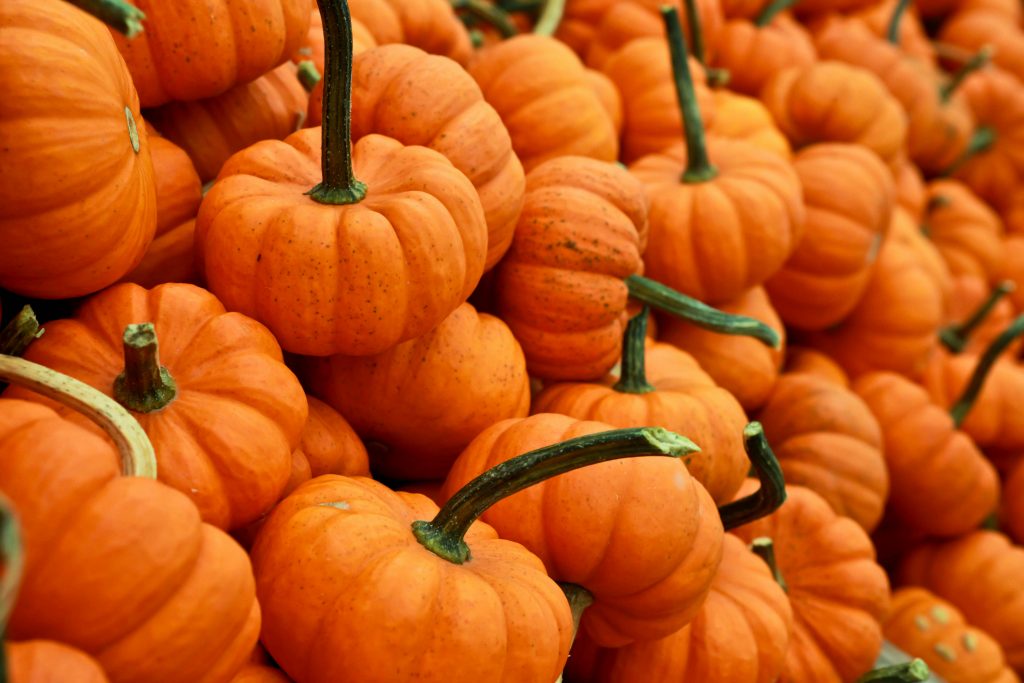Pumpkins are Fantastic for our Gut and Immune System
Whether it is snacking on roasted pumpkin seeds or drinking pumpkin pie smoothies, pumpkins have the power to improve our health and longevity.
According to an article from UMass Memorial Health, pumpkins are packed with anti-oxidants and anti-inflammatory agents, such as vitamin C, vitamin A, vitamin E and fiber. Studies have shown that consuming pumpkin seeds is associated with lower blood sugar levels and a reduced risk of certain types of cancer.
Cooked pumpkin contains about three grams of fiber per cup, according to the Mayo Clinic. Maintaining a high fiber intake can promote gut health, reduce the risk of colon cancer and control blood sugar and cholesterol, according to the Mayo Clinic.
There are More Than 150 Species of Pumpkins in the World
When searching for the ultimate Halloween pumpkin, we typically find farms full of the pumpkin species Cucurbita pepo ‘Jack-o’-Lantern,’ an orange pumpkin that weighs about 10 to 20 pounds, according to Seed Needs.
However, there are over 150 types of pumpkins grown worldwide, with sizes scaling from under one pound to more than 1,000 pounds, according to the Agricultural Marketing Resource Center. These pumpkins can be bumpy or smooth and range in colors from black, white, orange or green.
Despite the wide variety of pumpkins, only four species are typically grown for autumn festivities, according to an article by Today in Mississippi.
Jack-O’-Lanterns Were Once Used to Scare Away Evil Spirits on Halloween
During the 1600s, Irish and British farmers carved scary faces into beets, turnips and potatoes and filled them with candles and embers, according to an article by Spirit Halloween. The farmers then placed these carved vegetables in their windows and doorways, hoping they would scare away evil spirits.
One evil spirit in particular, “Stingy Jack,” was based on an Irish folktale of a man who invited the devil to join him for a drink, according to an article from History.com. When Jack did not want to pay for his own drink, he persuaded the devil to transform himself into a coin that Jack could use to purchase the drink. But after the devil completed Jack’s wish, Jack decided to keep the coin and place it inside his pocket next to a silver cross, forcing the devil to remain as a coin, according to the article.
Jack later freed the devil but continued to play tricks on him. Due to a former deal Jack had made with the devil, in addition to his “unholy” behavior, Jack was neither allowed entrance into heaven nor hell. Thus, he wandered the earth with burning coal to light his journey, receiving the name “Jack of the Lantern.”
Irish and British immigrants later spread these folk tales and traditions to America, leading to the Halloween decoration we now call jack-o’-lanterns.
Pumpkins Were Once Considered a Natural Medication
Ancient cultures once believed that pumpkin seeds were an aphrodisiac, according to an article from Harvest Wonders.
Pumpkin flesh was used to remove freckles, which was historically a sign of lower class, according to a History.com article, and to treat snake bites.
Pumpkins are a Multi- Million-Dollar Industry
Many pumpkin shoppers are unaware of the phenomenal profits that pumpkins generate for local farms and grocery stores each Halloween season. According to the USDA, the total pumpkin production value of the top six producing states in the country reached $141 million in 2023. In 2024, Americans were also expected to spend about $762.8 million on pumpkins to carve into jack-o’-lanterns, according to an article from Finder.
Related Articles:

